的点评
Partially restored palace on the outskirts of Amman. Believed to have been built around 180BC
Qasr al-Abd的点评
点评:This palace is located approximately 17 klms west of Amman. The origins of the palace appear to be somewhat of a mystery although it is believed to have been built for Harkanus who was a member of the powerful Tobiah family. It is thought to be one of the few examples of Hellenistic architecture in Jordan.
The original structure, albeit unfinished, was two storeys (approximately 14 metres) high whilst the base was approximately 40 metres by 20 metres. It is thought that the palace was left deserted following the death of Harkanus. The white limestone building blocks were sourced from the surrounding hills to build the palace.
Of note is the size of some of the blocks, the largest measuring 7 metres x 3 metres, and the carved animals on the exterior walls. Of the interior, very little remains. It is believed that the building was badly damaged by an earthquake in the 4th century AD. It was partially rebuilt in 1976.
Would not just specifically traves to see this palace even though it was free to enter.
The original structure, albeit unfinished, was two storeys (approximately 14 metres) high whilst the base was approximately 40 metres by 20 metres. It is thought that the palace was left deserted following the death of Harkanus. The white limestone building blocks were sourced from the surrounding hills to build the palace.
Of note is the size of some of the blocks, the largest measuring 7 metres x 3 metres, and the carved animals on the exterior walls. Of the interior, very little remains. It is believed that the building was badly damaged by an earthquake in the 4th century AD. It was partially rebuilt in 1976.
Would not just specifically traves to see this palace even though it was free to enter.
翻译:这座宫殿位于安曼以西约 17 公里处。宫殿的起源似乎有些神秘,尽管人们认为它是为强大的托比亚家族成员哈卡努斯建造的。它被认为是约旦为数不多的希腊化建筑之一。
最初的结构虽然未完工,但有两层(约 14 米)高,而底座约 40 米 x 20 米。人们认为哈卡努斯死后,宫殿就荒废了。白色石灰石建筑砖块是从周围的山丘上采集来建造宫殿的。
值得注意的是一些砖块的大小,最大的砖块为 7 米 x 3 米,外墙上雕刻着动物。内部几乎只剩下很少的东西。人们认为这座建筑在公元 4 世纪的一场地震中严重受损。 1976 年部分重建。
虽然免费入场,但不会特意前来参观这座宫殿。
最初的结构虽然未完工,但有两层(约 14 米)高,而底座约 40 米 x 20 米。人们认为哈卡努斯死后,宫殿就荒废了。白色石灰石建筑砖块是从周围的山丘上采集来建造宫殿的。
值得注意的是一些砖块的大小,最大的砖块为 7 米 x 3 米,外墙上雕刻着动物。内部几乎只剩下很少的东西。人们认为这座建筑在公元 4 世纪的一场地震中严重受损。 1976 年部分重建。
虽然免费入场,但不会特意前来参观这座宫殿。


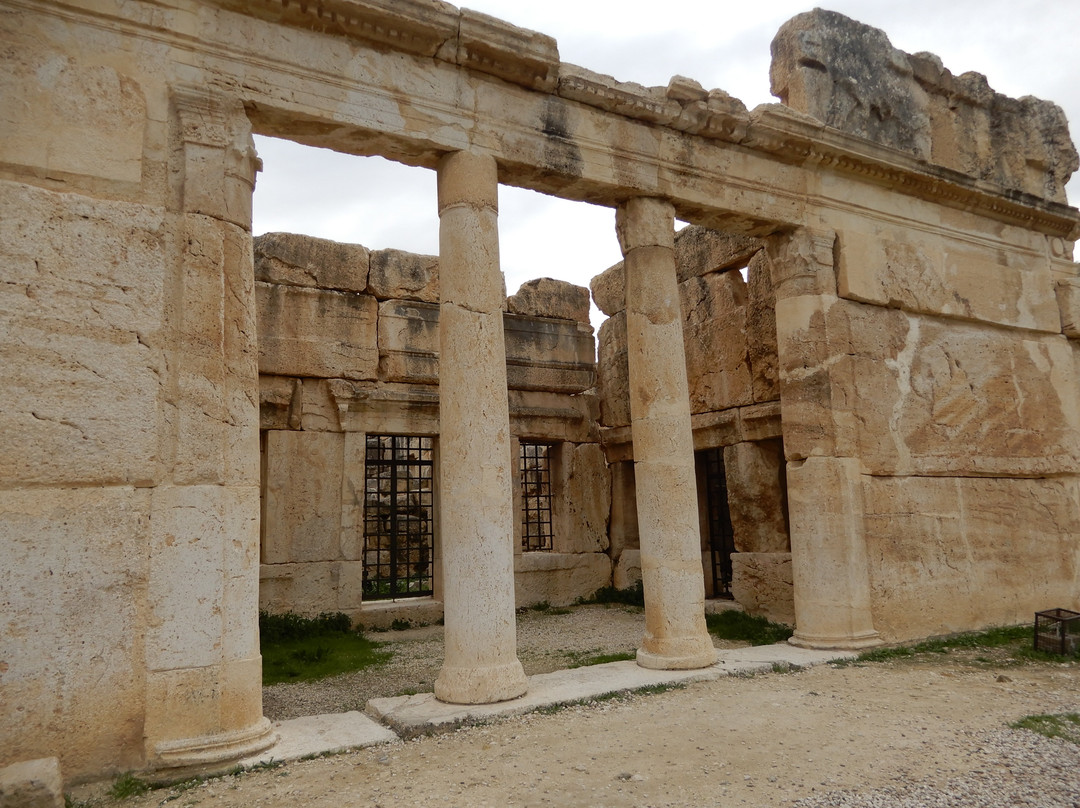
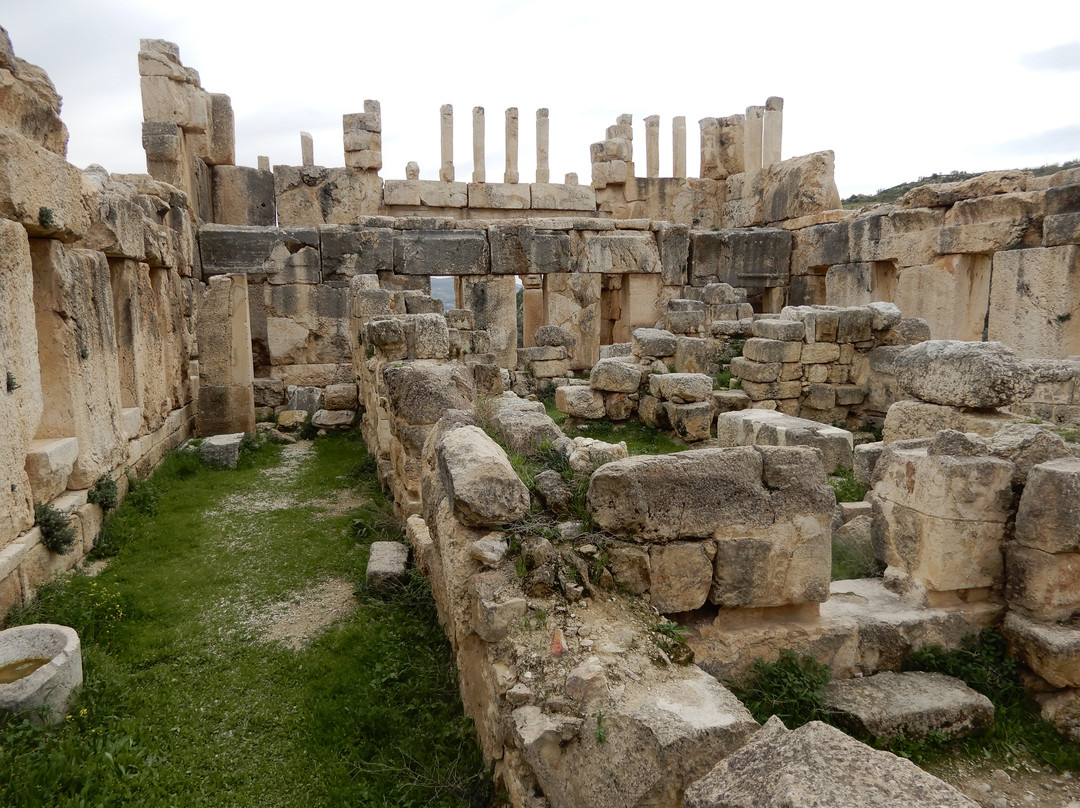
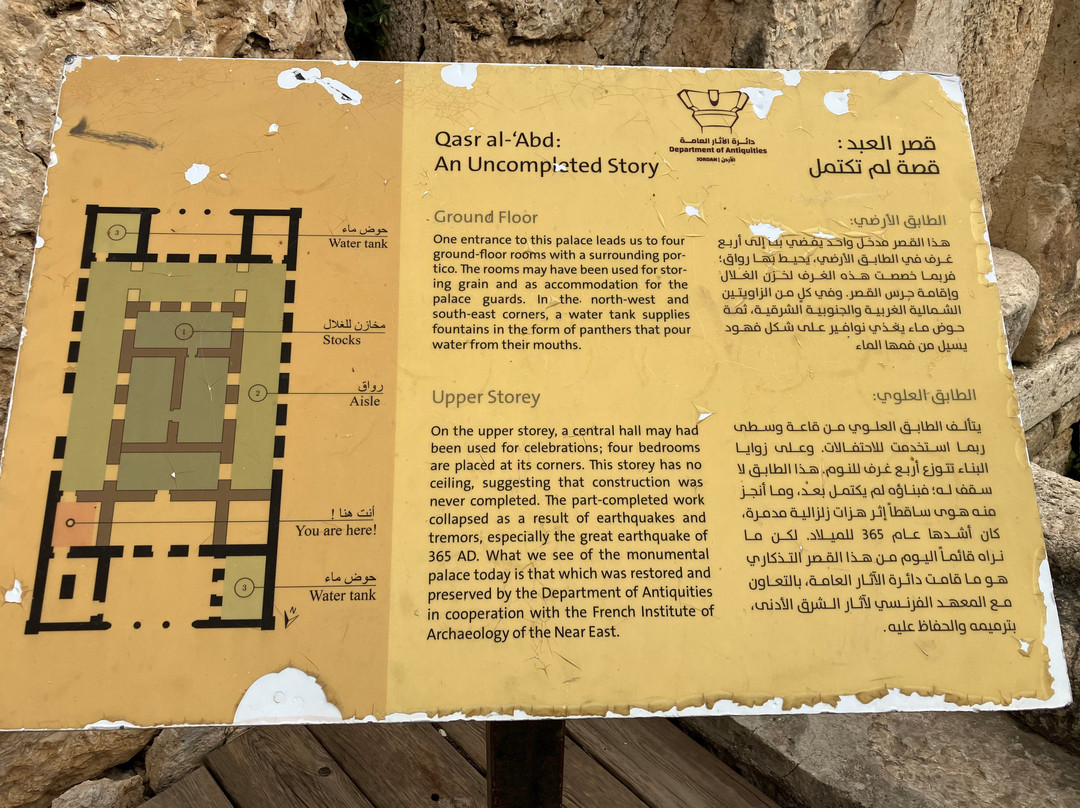
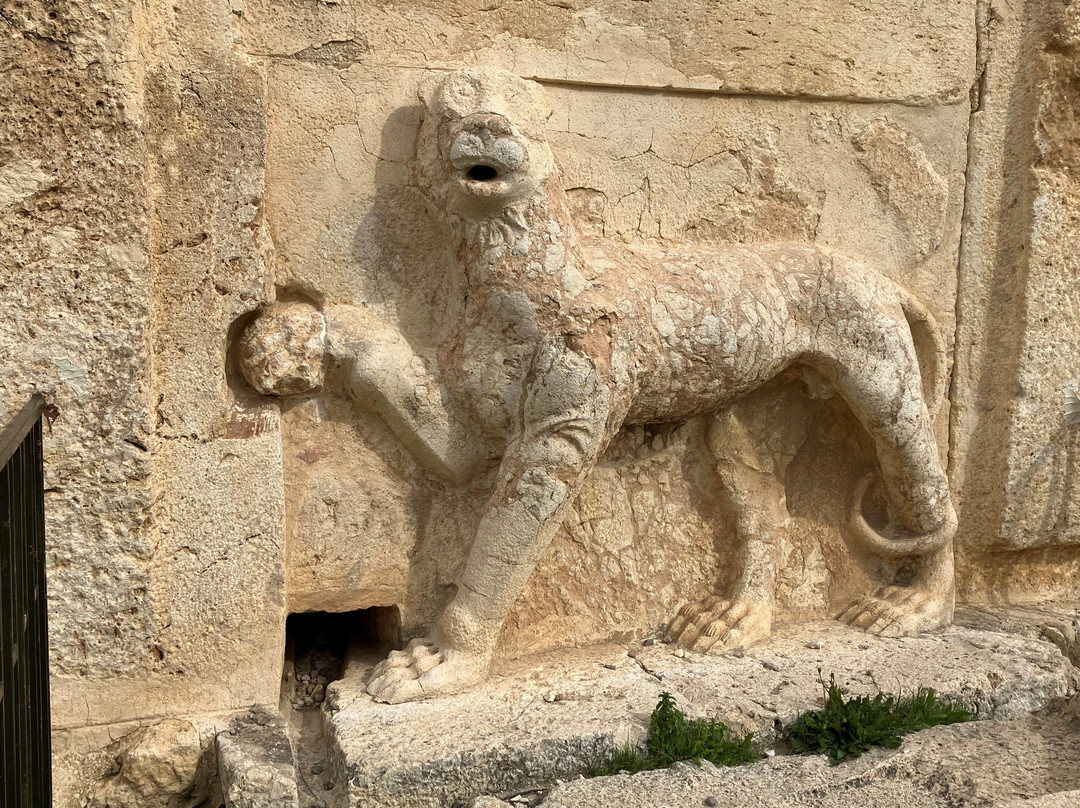
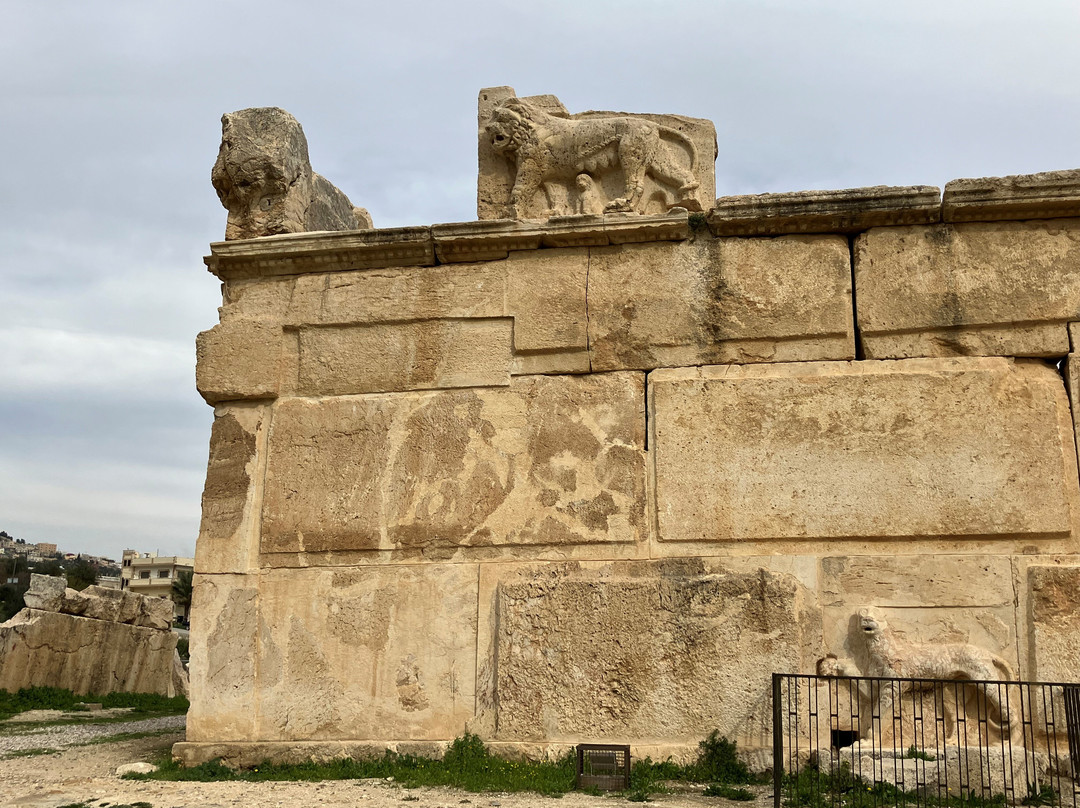
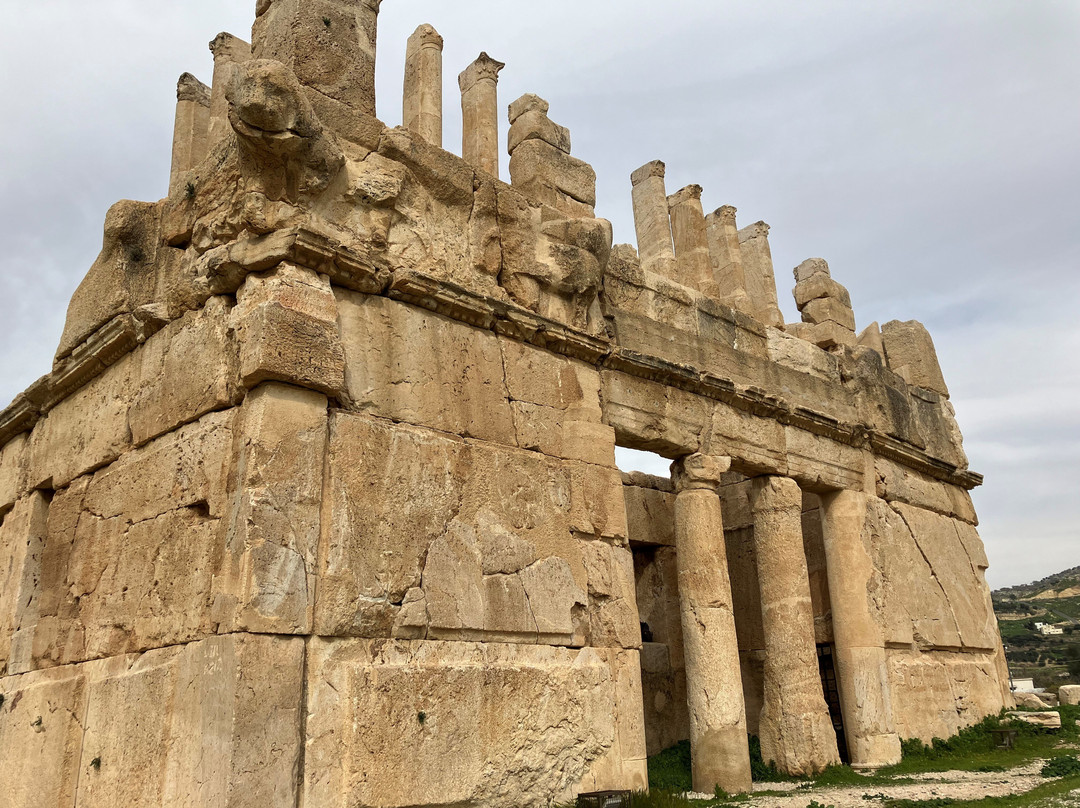
此点评仅代表旅行者个人的主观意见,并不代表TripAdvisor以及其合作方的意见。
关于我们
|
新闻动态
|
商务合作
|
会员中心
|
业主中心
|
业主通
|
常见问题
|
意见反馈
|
联系我们
|
营业执照
© 2025 Tripadvisor 版权所有。
使用条款 |隐私政策 |网站工作原理
部分照片由 VFM Leonardo 提供。
* Tripadvisor不是旅行社,也不是旅游预订服务代理商。我们提供免费、客观、公正的旅游资讯服务。 (显示更多)
TripAdvisor LLC 既不是预订代理商,也不是旅游运营商,不会向网站用户收取任何服务费。 按照规定,在 Tripadvisor 发布机票价格、游览和旅行套餐的合作伙伴(航空公司、旅行提供商及预订代理商),其标价须包含所有费用和附加费用。 例如, 机场出入境税费、消费税与其他服务费、手续费、杂费及附加费用。 当您向我们的某个合作伙伴进行预订时,请务必查阅他们的网站以了解当地行政部门要求的所有适用费用的具体情况。 除非另有说明,机票价格通常指的是一个人的价格(以人民币计)。
为方便起见,TripAdvisor LLC 根据从我们的预订合作伙伴获取的空房率计算每个酒店的均价。 对于游览和景点来说,所显示价格通常是每位成人的最低可用价格。 对于列出的任何旅行套餐或优惠,TripAdvisor LLC 无法保证任何特定的费率或价格。 此外,酒店均价每晚会更新,并以您的首选币种表示(使用现行汇率)。 由于这些已换算的价格是预估价格,因此,有关具体金额和币种请与预订网站进行核实。
此外,TripAdvisor LLC 无法保证我们网站上宣传的价格随时有效。 标价可能需要预订一定天数才能生效,或有不可用日期、使用条件或限制。
TripAdvisor公司对外部网站的内容一概不负责。优惠价格中不含税和其他费用。
ICP证:沪B2-20200433
沪ICP备20013175号
 沪公网安备31010502005427号
沪公网安备31010502005427号鹰程信息技术(上海)有限公司
货币/国家及地区
¥CNY
中国

